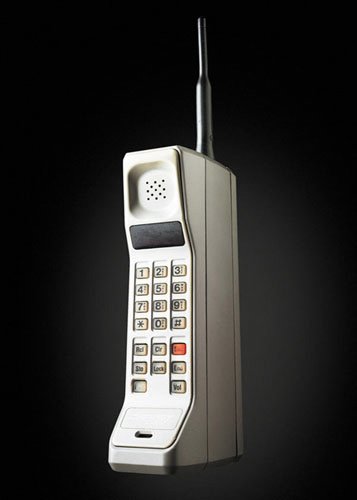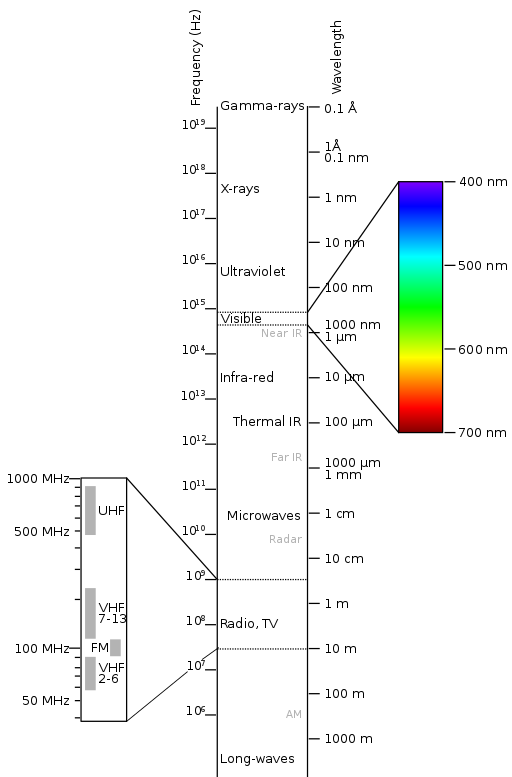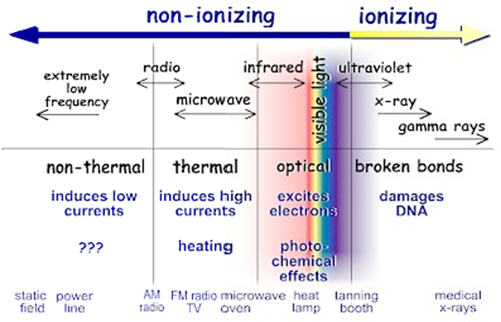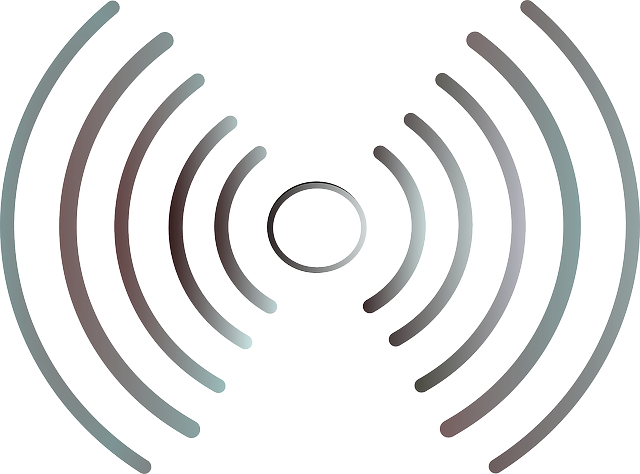How mobile phone radiation may have adverse effect on memory performance in adolescents.
Introduction
Hey guys, this is a very important information for adolescents; and if you are not an adolescent, do not feel that this does not concern you at all, I'm sure that you have youngsters that live around you, perhaps your own children, nephews, nieces, neighbors etc., please do well to inform them. And if you are an adolescent yourself, then you are getting the information directly.
We all know how much adolescents of this generation love their mobile phones. Hence, it would be quite difficult to inform adolescents of the risk associated with using mobile phones. But we have to face the truth- if you are an adolescent, you are at risk of having your memory performance been affected adversely by exposure to mobile phone radiation. I know that you want to know how all this is even possible. Don't worry, I gat you, and I would be explaining everything to us. So just relax and let's ride together.

[Modern mobile phone. Source: Flickr. Author: Mike MacKenzie. CCO Licensed]
Mobile Phones
Of a truth, it is very difficult to imagine how our lives could be without mobile phones. These mobile phones come in different sizes, shapes, and has so many features designed to help users carry out daily needs, which may include socialization, communication and also to carry out many other activities. Considering all the services that latest mobile phones provide, it forces me to ask this question- is phone the right term for us to use to describe these devices? because, as a matter of fact, a phone is basically used for dialing and making calls, whereas the latest mobile phones that we see today are used for so many functions.
A mobile phone, known as a cell phone in North America, is a portable telephone that can make and receive calls over a radio frequency link while the user is moving within a telephone service area. The radio frequency link establishes a connection to the switching systems of a mobile phone operator, which provides access to the public switched telephone network (PSTN). Source
Right form the beginning of civilization, the need to communicate over long distance have existed. But there were no convenient, efficient as well as quick means of doing this. The truth is that, the idea or the thought of carrying a phone in the pocket (i.e mobile phone) has been conceived for a long time, since the nineteenth century, very briefly after Alexander Graham patented telephone.
Precisely on the 3rd day of April 1973, the very first mobile telephone call was made between Martin Cooper (a researcher at Motorola) and Dr. Joel S. Engel. The name of this mobile phone was called DynaTAC 8000X. It was the number one commercial mobile phone in the history of planet earth. And ever since then, the evolution of the modern smart phones that we use today has been quite rapid I must confess.

[DynaTAC 8000X. Source: Flickr. Author: Rosenfeld Media. CCO Licensed]
Radiation
In physics, radiation is the emission or transmission of energy in the form of waves or particles through space or through a material medium. Source
Hey guys, radiation may include particle radiation, electromagnetic radiation, acoustic radiation as well as gravitational radiation. In which case, the particle radiation has to do with the alpha radiation, the beta radiation as well as the neuron radiation (I'm sure most of us are familiar with these radiation). The gravitational radiation has to do with the radiation that occurs as a form of gravitational waves. The acoustic radiation involves sounds (hahaha, music!), ultrasound as well as seismic waves. Last but not the least, we have the electromagnetic radiation, which involves the microwaves, the gamma rays, the radio waves, the visible light, the X- rays as well.
Now, one can categorize radiaton into two- the ionizing radiation and the non-ionizing radiation. When we talk about ionizing radiation, we are talking about radiation that carries with it a lot of energy to set electrons free from atoms as well as molecules, in other words , it ionizes them. Now guys, the higher ultraviolet, the X-rays as well as gamma rays are all examples of ionizing radiation. On the other hand, the lower ultraviolet, the microwaves, infrared, as well as radio waves are all examples of non-ionizing radiation. In which case, non-ionizing radiation are radiation that are not strong enough or do not have energy enough to set electrons free from atoms as well as molecules.
Although, the ionizing radiation are stronger, they still have their negative side, been that due to their higher frequency as well as shorter wavelength, exposure to these radiation can be truly dangerous, as they can cause radiation sickness, genetic problems, cancer, burns, cell damage as well as death. The image below would explain all this better.

[Electromagnetic spectrum. Source: Wikimedia Commons. Author: Penubag. CC-BY-SA-3.0 Licensed]
And as you can see from the image, the gamma rays, the X-rays, and the higher ultraviolet radiation are ionizing radiation, and all the others below them are non-ionizing radiation. I'm sure that the image has explained what a thousand words may not. Ok, let's move on.
Electromagnetic Radiation
Electromagnetic radiation involves electromagnetic waves. I know that some of you would be wondering, what again is electromagnetic waves. Here's it, electromagnetic waves are oscillations that have to do with both electric as well as magnetic fields- as the name implies electro-magnetic- hence, involving electric and magnetic fields. Both the electric and magnetic fields move at the speed of light through a vacuum. The movement of the electric and magnetic fields are perpendicular to each other as well as they are perpendicular to the direction of the wave movement, thereby forming what is called a traverse wave. I'm sure that you have noticed that the wavefront of electromagnetic waves given off from a point source e.g a light bulb, is a sphere. There are two things that determine the position of an electromagnetic wave in the electromagnetic spectrum, they are the wavelength as well as the frequency of oscillation. Based on the frequency, electromagnetic waves are given names, as they have different sources as well as different effects on matter.
Now note, wavelength is the inverse of frequency. What this means is that whenever frequency is increasing, wavelength is decreasing and vice versa. Thus, let me share with us in order of decreasing wavelength and increasing frequency- radio waves, microwaves, next infrared radiation, then we have visible light, next ultraviolet radiation, the X-rays and finally the gamma rays.

[Ionizing and non-ionizing radiation. Source: Wikimedia Commons. Author: EPA. CC-PD-Mark Licensed]
Electromagnetic radiation is usually linked to those electromagnetic radiation (EM) waves that propagate themselves freely without needing any push from the charges that actually produced them. This is because they've been able to reach a very far distance from those charges that produced it. Hence, electromagnetic radiation (EMR) is sometimes called far field. And EM is referred to as near field; which are electromagnetic waves that are near the charges that produced them. Hence, EMR has to do with very long distance, while EM has to do with near distance.
Radio frequency (RF)
Radio frequency is sometimes referred to as radio waves. Usually moving to and fro in the range of frequency used in radio, hence moving from about 20,000 times per second (20KHz) to about 300 GHz. Usually radio frequency (RF) is associated with electrical rather than mechanical movements.It is also well known that radio waves actually travel at the speed of light. Radio waves or radio frequency are actually produced by electric charges that are going through acceleration. Normally, we see radio waves given off by astronomical objects as well as lightning. Artificially, radio waves are produced by transmitters and are received by radio receivers, by using what we call antennas. We see the applications of radio waves in mobile radio communication, wireless networks, radar and some other navigating systems, broadcasting, as well as communication satellites.

[Radio waves. Source: Pixabay. Author: Clker-Free-Vector-Images. CCO Licensed]
Let's discuss how the radiation from mobile phones may affect the memory performance of adolescents.
We all have been observing the rapid way information and communication technologies (ICT) have been evolving; and we've also been seeing how this rapid evolution has increased our exposure to radiations daily, specifically radio frequency electromagnetic fields (RF-EMF). Since we've earlier on discussed radio frequency as well as electromagnetic field, I'm sure understanding what RF-EMF means shouldn't be a problem, as simply by combining their individual definitions, you get what they mean together. Hence, RF-EMF involves the relationship between radio frequency or radio waves and electric as well as magnetic fields. Research has found that the exposure of the brain to RF-EMF may have negative effect on memory performance of adolescents.
Frequent use of mobile phones can lead to deterioration of memory performance of specific brain regions largely due to exposure to radiofrequency electromagnetic fields (RF-EMF) during mobile phone use. Source
Hence, the research found that the cumulative exposure of the brain to RF-EMF from mobile phone for a period of one year may have adverse effect on the figural memory performance in adolescents. Of which the figural memory performance has to do with the ability of an individual to remember abstract forms. This is what exactly happens- the figural memory is positioned at the right hemisphere of the brain. Hence, adolescents that frequently make use of their mobile phone on the right side of the head usually are affected adversely as the RF-EMF from the mobile phone, continuously affects the figural memory located on the right hemisphere of the brain as I mentioned above.
It was found from this research that other uses of wireless communication e.g sending of text messages, browsing on the internet as well as playing games may cause only very small RF-EMF exposure to the brain and hence, they were found to not affect the memory performance adversely. It was mainly the use of mobile phones on the right side of the head of adolescents that was found to have negative effects. This research involved there about seven hundred adolescents over a period of one year. These adolescents were between the ages twelve and seventeen years of age. The research also found that the use of head phones as well as loud speaker while calling may reduce the risks to the brain. It was also found that it is especially important to make use of loud speaker and head phones when the quality of the network is low. For more information, feel free to check my references.
Conclusion
Hey guys, wow! We've been able to discuss mobile phones; in which case, we discussed about the very first commercial mobile phone ever (the DynaTAC 8000X). We moved on to discussing radiation and we discussed the different types of radiation as well as we discussed ionizing radiation and non-ionizing radiation. Out of the different types of radiation, we moved on further to discussing electromagnetic radiation, because it was the one related to mobile phones. We also discussed radio frequency which is sometimes called radio waves.
And then, we discussed how mobile phone radiation may affect the memory performance of adolescents, particularly the figural memory performance. And how adolescents that use mobile phones on the right side of the head may be affected, as radio frequency- electromagnetic field (RF-EMF) from mobile phone may have adverse effect on the figural memory. And finally, we discussed that adolescents are at lesser risk when they make use of loud speakers and head phones, when making calls; especially when the network is low.
Thanks for reading!
References
https://www.thevintagenews.com/2016/10/01/priority-brief-history-mobile-phones-evolution-years/
https://www.sciencedaily.com/releases/2018/07/180719121803.htm
Image Sources
All images used here are from free sources and liable for commercial use
all licensed under the Creative Commons.

Wow!!! What an amazing article.
Thanks @starrichie for sharing this wonderful information with us.
Dang, so you're telling me I could be a good 20% smarter than I already am? I feel so dumb :(
One thing that one should always insist on is that there is no definite proof (yet?). All other factors have not been excluded with enough certainty.
Do you have by any chance the link to the original scientific article? I would like to double check directly at the source of information ^^
This post has been voted on by the steemstem curation team and voting trail.
There is more to SteemSTEM than just writing posts, check here for some more tips on being a community member. You can also join our discord here to get to know the rest of the community!
That was Quite an interesting one.......you did an exhaustive overview here, thumbs up
Hi @starrichie!
Your post was upvoted by utopian.io in cooperation with steemstem - supporting knowledge, innovation and technological advancement on the Steem Blockchain.
Contribute to Open Source with utopian.io
Learn how to contribute on our website and join the new open source economy.
Want to chat? Join the Utopian Community on Discord https://discord.gg/h52nFrV